As waterfront views go, the sight of the Oslo Fjord embraced by its wooded hills is something that may stay with you forever.
Much of Oslo’s former industrial harbour has been re-imagined, and is now elevated with bold architecture like the spectacular Opera House, the future Munch Museum and Renzo Piano’s Astrup-Fearnley Museum of Modern Art.
In summer the fjord’s islands and craggy shoreline become a peaceful getaway, and you can flit from beaches to forest trails to open sweeps of gentle water, ready to be explored by boat.
One idyllic escape along those lines is the Bygdøy peninsula, with a long royal connection and the setting for no fewer than five national museums.
There’s the Skansen-style Folkesmuseum, the Fram Museum, where you can relive the voyages of Norway’s great explorers and the Viking Ship Museum, where the 1,000-year-old longboats look like they’ve just been hauled in from the shore.
1. Norsk Folkemuseum
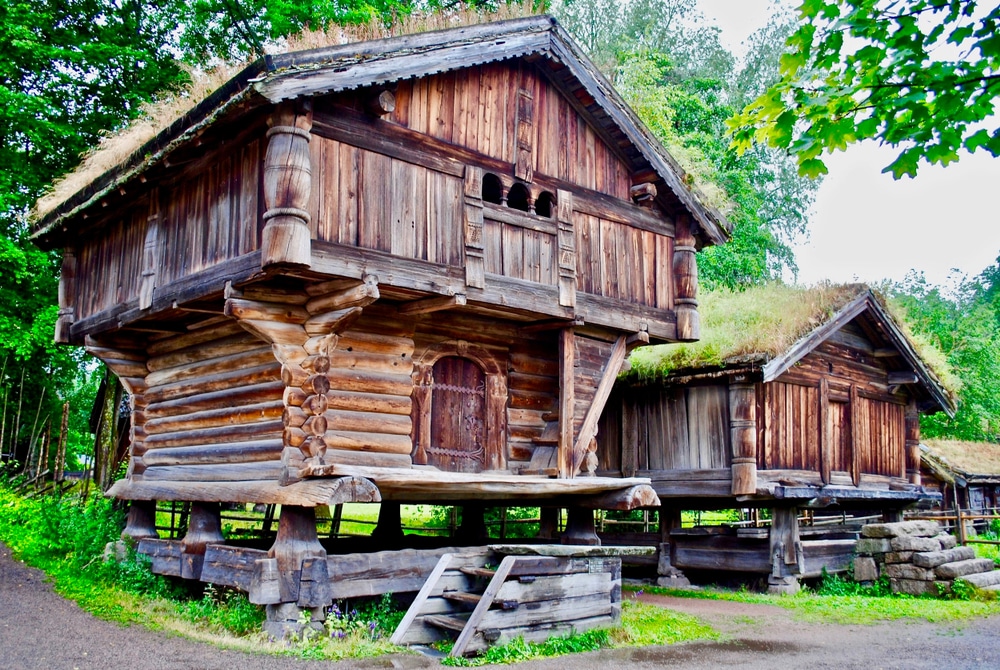 Source: EWY Media / Shutterstock
Source: EWY Media / ShutterstockThe idyllic Bygdøy peninsula, just west of Oslo, is the perfect spot for an open-air museum, with 160 buildings transferred here from towns and districts across Norway.
The Norsk Folkemuseum is a piece of history of its own, established in 1894 and with many of its best-known monuments relocated to the site soon after.
The most famous has to be the spellbinding Gol Stave Church, dating around the turn of the 13th century, with delicate carving and Medieval murals surviving inside.
Also here is an entire town centre, mills, homesteads and shops of all descriptions, and even a whole 19th-century tenement block furnished in a variety of styles from the 1870s to the early-21st century.
Summer is a special time at the Norsk Folkemuseum, when the entire attraction feels like a living village, populated with people in typical folk costume.
At this time of year you can learn how to bake traditional Norwegian lefse bread, while children can meet the farm animals and hear fairytales in the old-time way.
Website: https://norskfolkemuseum.no/en
2. Viking Ship Museum
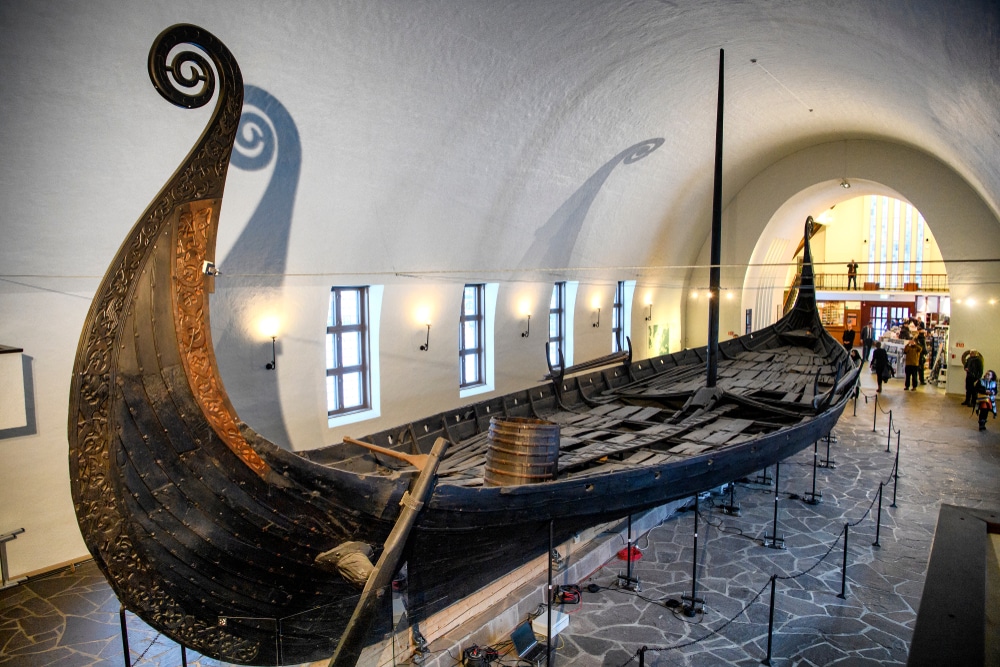 Source: paparazzza / Shutterstock
Source: paparazzza / ShutterstockThe best-preserved Viking ships in the world are in store at this astounding museum on the Bygdøy peninsula.
These were seagoing vessels that were brought ashore for funeral rites, and those burials have been unearthed around the shores of the Oslo Fjord.
The showpiece is the completely intact Oseberg Ship, recovered from the world’s largest Viking ship burial, and this is on show together with the Tune ship and the Gokstad ship.
The exhibition allows you to study the wonderfully detailed carvings on the ships’ timbers, and displays all manner of finds from the burial sites, including sleds, an ornate horse cart, beds, tools, textiles and skeletal remains, all offering a glimpse of the Vikings in life and death.
During the course of the day the eye-popping movie, The Vikings Alive is projected onto the building’s white walls to help bring the ships to life.
Website: https://www.khm.uio.no/english/visit-us/viking-ship-museum/
3. Holmenkollen Ski Museum & Tower
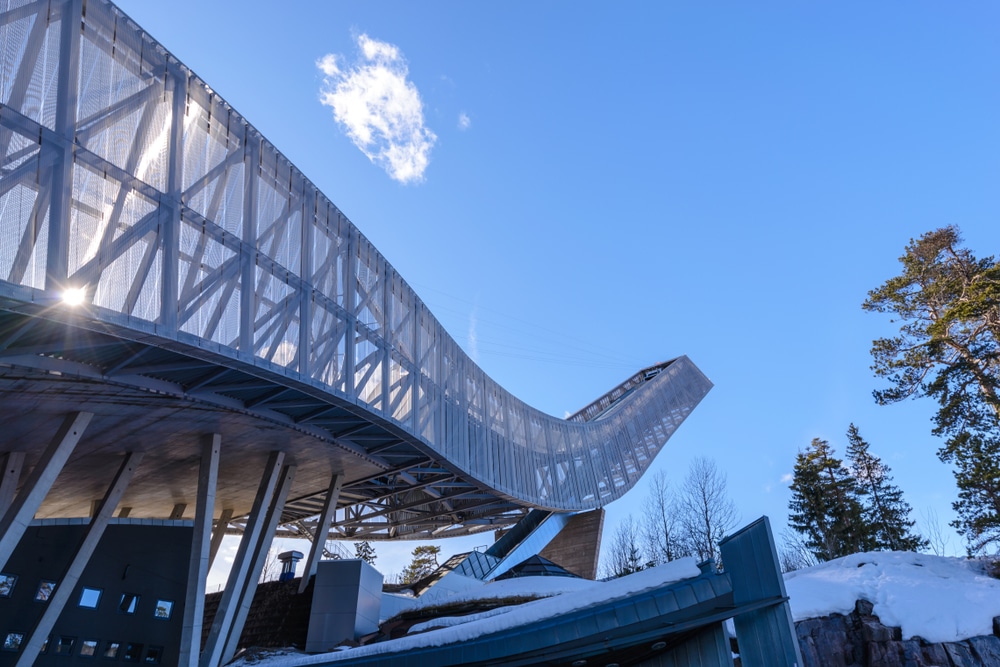 Source: Noppasin Wongchum / Shutterstock
Source: Noppasin Wongchum / ShutterstockA few minutes out of Oslo, the ski jumping hill Holmenkollenbakken has an enduring place in Norwegian sport and culture.
Used for ski jumping since 1892 and constantly reworked since that time, the hill and jump are now topped by an ultramodern tower, and encompassed by the Holmenkollen National Arena, for winter sports like cross-country skiing and biathlon.
The museum built into the hill below the jump is the oldest ski-oriented museum in the world, dating back to 1923. This charts 4,000 years of skiing, beginning with the Ice Age Rødøy Man rock carving and including artefacts from polar expeditions by Fridtjof Nansen and Roald Amundsen.
The museum’s oldest ski was carved from pine around 1,400 years ago and discovered in marshland in Alvdal. The jump tower is integral to any visit and gives you the most far-reaching view in the Oslo area, stretching out over the city and fjord.
Website: https://www.skiforeningen.no/en/holmenkollen/skimuseet/
4. Fram Museum
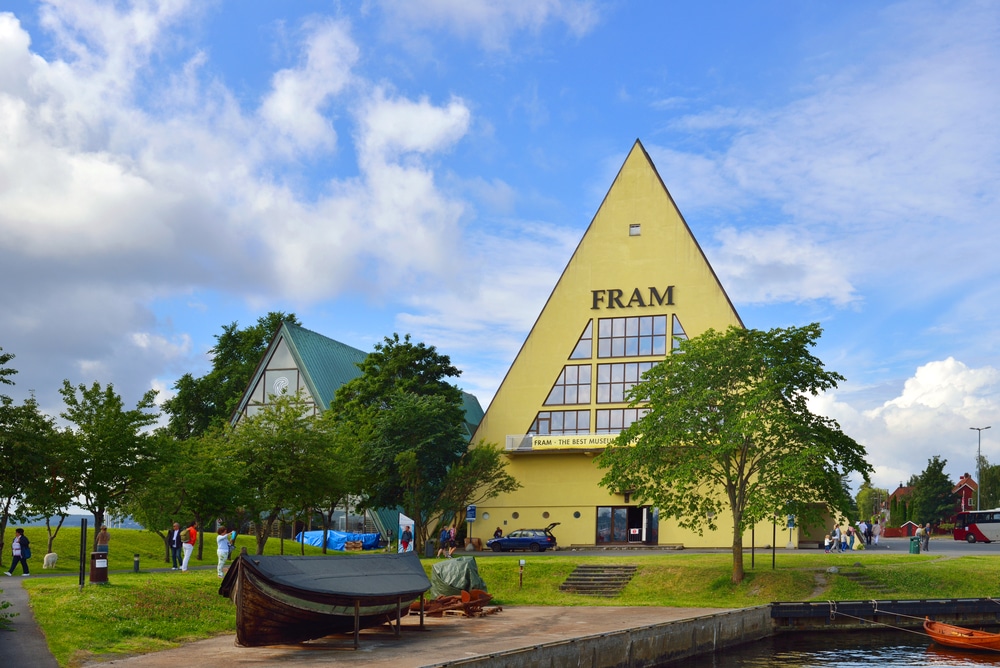 Source: Popova Valeriya / Shutterstock
Source: Popova Valeriya / ShutterstockLaunched in 1892, Fram is a three-masted schooner custom designed for Fridtjof Nansen’s 1893-1896 Arctic Expedition.
The ship’s hull was configured to withstand the enclosing Arctic ice, floating on top of it rather than being crushed by it.
Over the next 20 years Fram was the ship of choice for Otto Sverdrup, Oscar Wisting and Roald Amundsen’s polar expeditions, giving the vessel a thrilling legacy.
Fram is the centrepiece of this attraction using imaginative museography and ambient effects to recall the amazing feats of endurance by its crews more than a century ago.
In recent years Fram has been joined by Roal Amundsen’s Gjøa, the square-sterned sloop that completed the first transit of the Northwest Passage, completed in 1906 after a gruelling three-year voyage.
Gjøa has its own dedicated building, and like Fram is complemented by photos, artefacts and special installations to paint a picture of life on this record-breaking expedition.
Website: https://frammuseum.no
5. Akershus Fortress
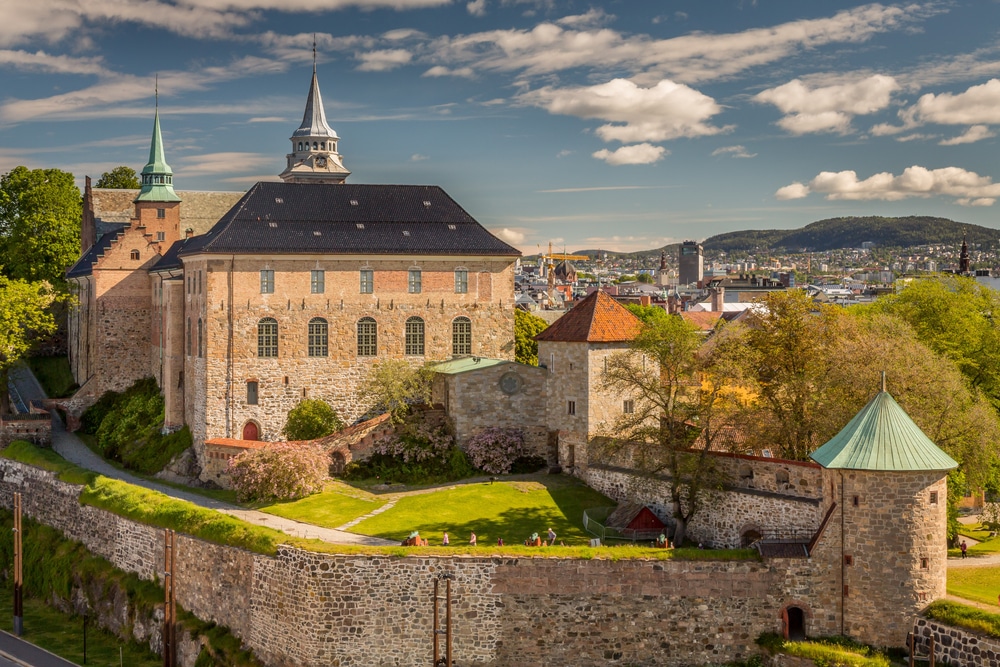 Source: Paulo Miguel Costa / Shutterstock
Source: Paulo Miguel Costa / ShutterstockFor a deeper understanding of Oslo’s past you could come to the seafront castle that has stood for almost the entirety of the city’s history.
Up to the middle of the 16th century Akershus Fortress withstood a litany of sieges without ever being captured, and became the new focal point of the city when Christiania relocated following the great fire of 1624.
To suit the needs of its royal inhabitant, the property was redesigned as a Renaissance castle in the middle of the 17th century under Christian IV of Denmark.
Today it’s the HQ for the Norwegian Ministry of Defence, the temporary office of the country’s Prime Minister. The grounds are a gathering point for concerts and public celebrations, and also contain Norway’s Resistance Museum and the Norwegian Armed Forces Museum.
The fortress itself opens for guided tours in summer, when you can look around the grand interior spaces, like Olav V’s Hall with its hammerbeam ceiling, and the Royal Mausoleum, where a long line of Norwegian royal figures have been laid to rest.
6. Munch Museum
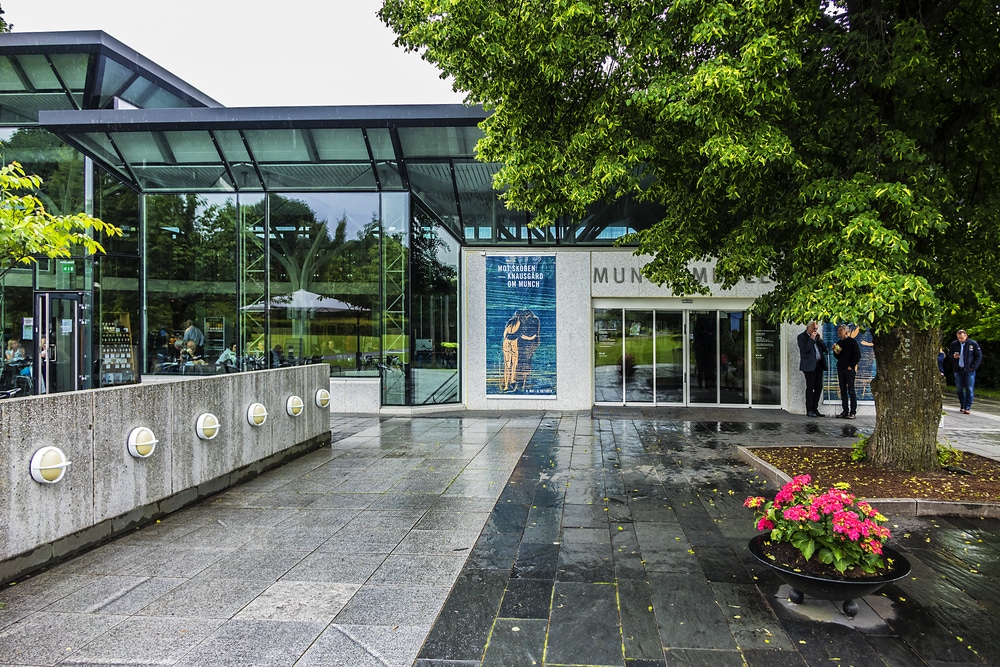 Source: Kiev.Victor / Shutterstock
Source: Kiev.Victor / ShutterstockThe career of one of history’s most influential painters is inextricably linked to Oslo, and at his death in 1944 Edvard Munch bequeathed some 1,000 paintings, 18,000 prints, 4,500 drawings, 500 plates and six sculptures to the city.
This is by far the largest collection of Munch’s work and includes versions of his masterpieces, The Scream and Madonna.
It was on a walk in Oslo that Munch heard the “enormous, infinite scream of nature”, which inspired the namesake painting.
At the time of writing, the Munch Museum was just about to make the long-delayed switch from the old premises east of the city centre to a striking modern building on the waterfront in Bjørvika.
For the time being the ever-changing exhibition emphasises the variety of his output, complemented by an audio guide in Norwegian and English. There’s also an award-winning film on Munch’s life, shown throughout the day.
Website: https://www.munchmuseet.no/en/
7. Frogner Park
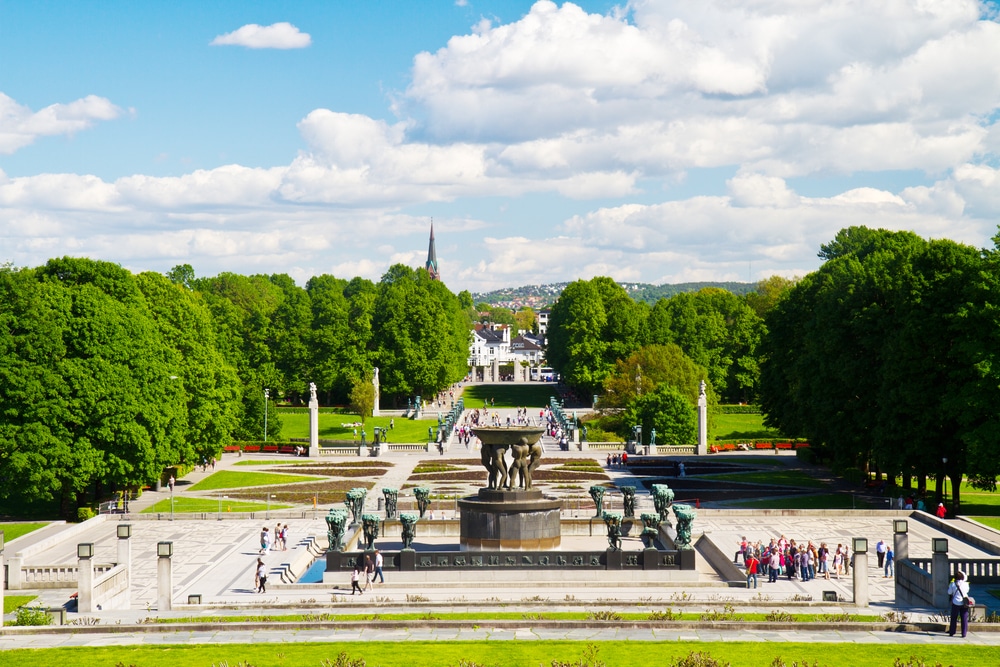 Source: Luca Santilli / Shutterstock
Source: Luca Santilli / ShutterstockOslo’s largest park is on the grounds of a historic estate, Frogner Manor, and is famous for hosting the world’s largest sculpture park by a single artist.
Chances are that you’ll have seen this iconic and surreal installation by Gustav Vigeland (1869-1943) in popular culture well before visiting the park.
Covering 32 hectares and set on an axis leading up from the remarkable Bridge on the Frogner Pond, the ensemble was composed between 1924 and 1943 and comprises 212 bronze and granite sculptures, many of which are postcard images for Oslo.
Among the most recognisable works are the Angry Boy, Man Attacked by Babies and the staggering Monolith, set at the park’s highest point.
Elsewhere there’s much to love about Frogner Park, as a tranquil space for walking, jogging or just making the most of the sunshine in summer.
The park’s roses are a joy at this time of year, with 14,000 bushes from 150 different cultivar, representing Norway’s largest collection.
8. Norwegian National Opera & Ballet
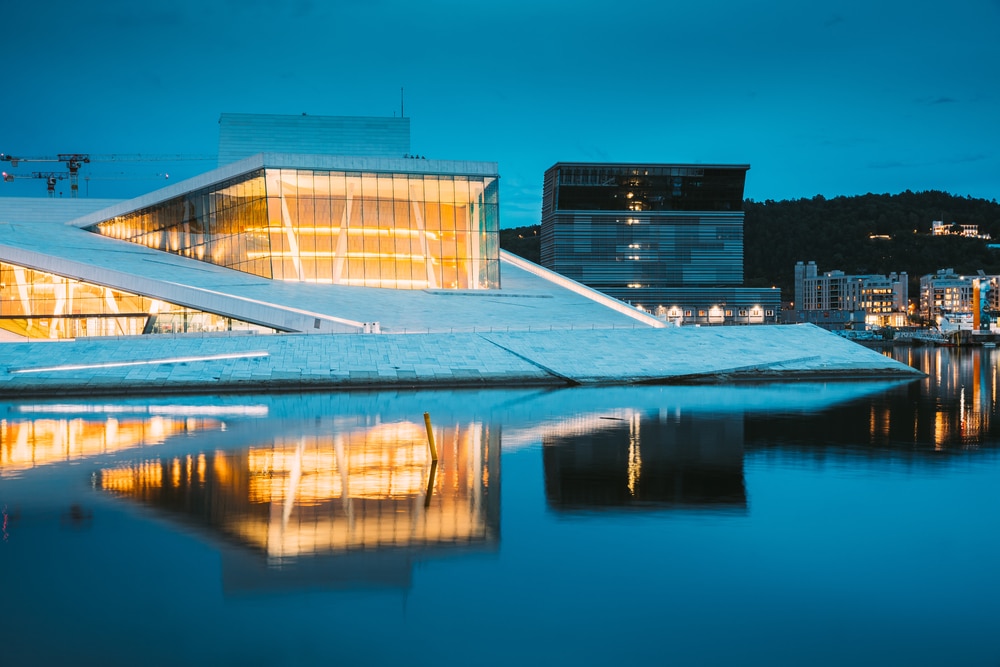 Source: Grisha Bruev / Shutterstock
Source: Grisha Bruev / ShutterstockInaugurated in 2008, this sublime performing arts venue is a modern emblem for Oslo. The Oslo Opera House is by the fjord in the newly regenerated Bjørvika neighbourhood, where there used to be a container port.
Subtly evoking scenes from Norway’s natural landscapes, the building is all flat plains and angles, stooping gently to the water.
The shallow slope makes the exterior accessible to the public, and you’re encouraged to walk on the building’s roof, clad with granite and Carrara marble.
From the platform above the foyer you can look out at the fjord, admiring Monica Bonvicini’s sculpture, She Lies (2007), on a platform in the water.
A monument of the Oslo Opera House’s status requires a guided tour, to see interior art by the likes of Olafur Eliasson and take in the oak-lined main auditorium, with a horseshoe plan recalling Europe’s classic opera houses.
On your tour you’ll find out all you need to know about the architecture, construction, stage technology and everything that goes on behind the scenes.
Website: https://operaen.no/en/
9. Oslo Fjord
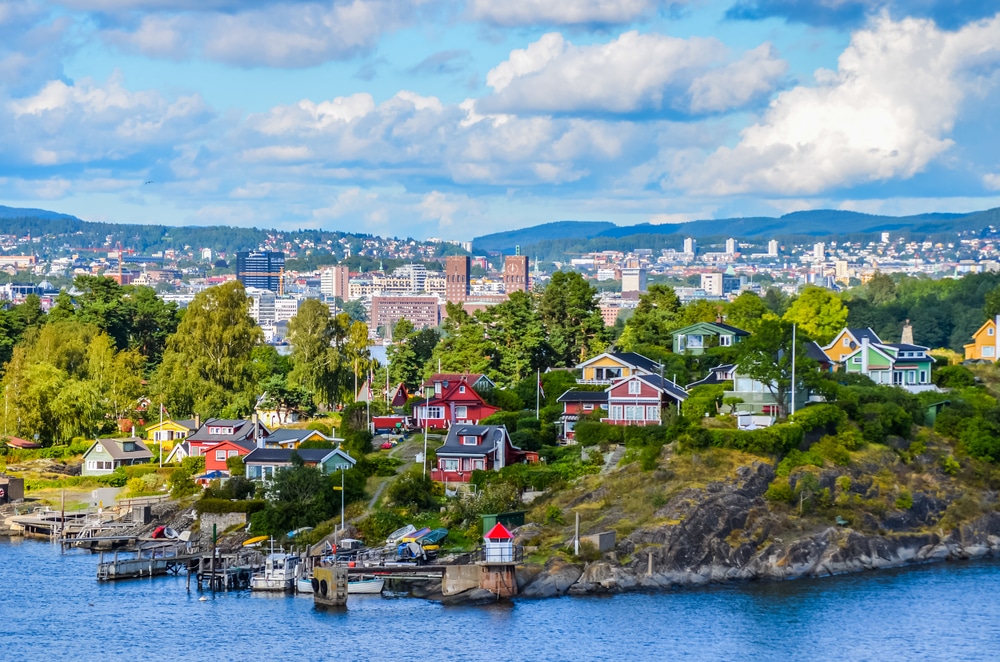 Source: Damien VERRIER / Shutterstock
Source: Damien VERRIER / ShutterstockOslo is at the head of a scenic, 100-kilometre inlet, with the country’s mildest climate and a world of possibilities for outdoor activities.
Immediately in front of the city, the Inner Oslo Fjord is strewn with wooded islands, each with their own character and past.
Almost all of these are a haven for bathing, boating, kayaking and now paddleboarding, especially in warmer weather.
Hovedøya, the closest island to the city centre, has a pair of beaches on its west coast, and conceals the vestiges of a Cistercian monastery dating back to the mid-12th century.
The simplest way to see the fjord is on a cruise. Båtservice for instance runs a 1.5-hour, hop-on, hop-off city cruise in the summer, as well as a year round two-hour sightseeing tour and a menu of other experiences.
You could also catch a ferry from Aker Brygge if you want to tailor your own island-hopping adventure.
And if you happen to be in Oslo in the depths of winter, bathing isn’t out of the question: There are numerous saunas on the shore, the most central being between the Opera house and Sørenga wharf, where you can alternate between the icy fjord and the warmth of the sauna and hot tub.
10. Oslo Royal Palace
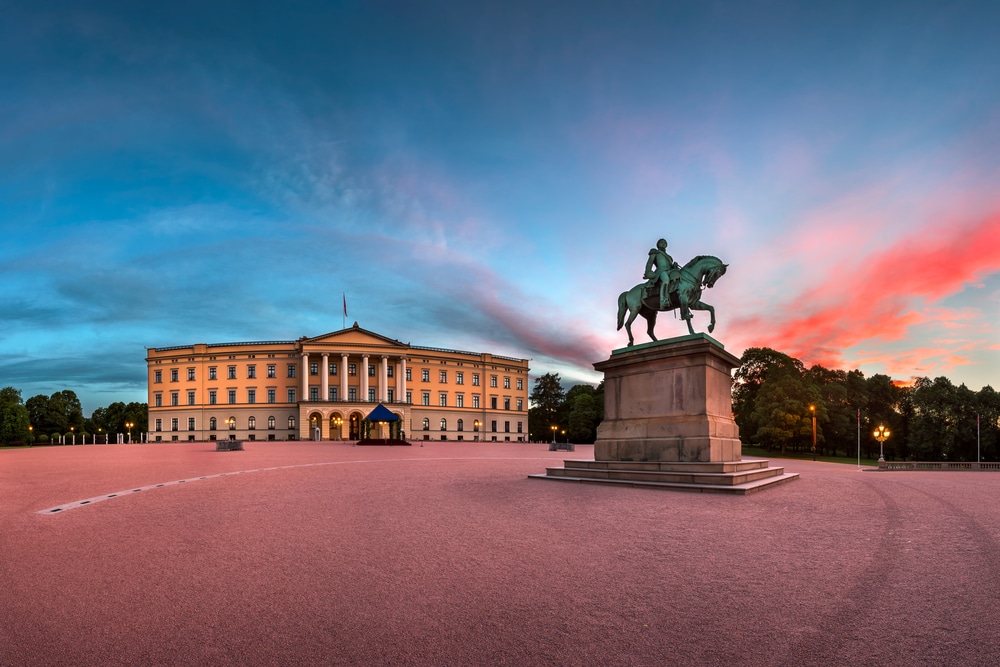 Source: ansharphoto / Shutterstock
Source: ansharphoto / ShutterstockSituated on a parcel of high ground at the west end of the arterial Karl Johans gate is the main residence for the King and Queen of Norway.
Heads of state visiting Norway will also stay at this property, and the elegant ceremonial halls have hosted innumerable functions over the last 170 years.
Naturally a guided tour is not to be missed, and these are available from late-June to mid-August, with tickets going on sale in March.
You’ll be shown around the palace’s finest state rooms and every year there’s an exhibition, composed of noteworthy costume, furniture, art, silverware, toys and textiles from the Royal Collections.
You can also catch first-class exhibitions at the Queen Sonja Art Stables, first opening to the public in 2017 and hosting shows for Munch, Vigeland, decorative arts and Sámi art in the last few years.
Finally, the palace rests in one of Oslo’s largest and most beautiful parks, open to the public all year.
Visit to watch the changing of the guards ceremony, held at 11:30 every day, and in summer you can tour the Queen’s Park, harking back to a dainty Rococo garden landscaped for the mayor of Christiania in 1751.
Website: https://www.royalcourt.no/seksjon.html?tid=28697&sek=27322
11. Astrup-Fearnley Museum of Modern Art
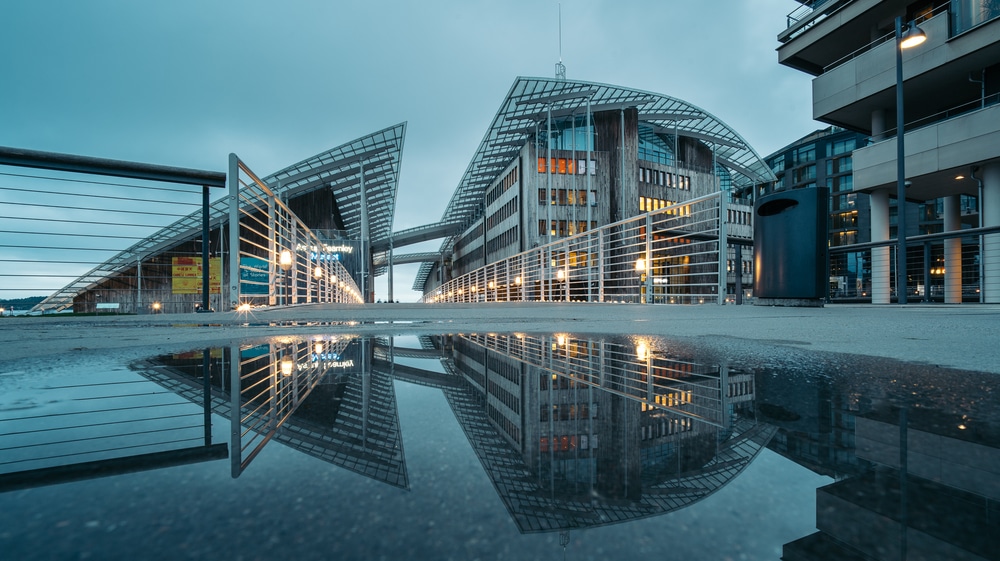 Source: HUANG Zheng / Shutterstock
Source: HUANG Zheng / ShutterstockAt the very tip of Aker Brygge, on Tjuvholmen is a contemporary art gallery funded by foundations set up by descendants of the Fearnley shipping family.
The museum dates to 1993 and in 2012 moved into two waterside buildings designed by Renzo Piano.
The collection is steeped in the American contemporary art scene, but also encompasses German Abstract Expressionism, European Pop Art and the Young British Artists.
There are works by artists as diverse as Warhol, Jeff Koons, Janine Antoni, Sherrie Levine, Sigmar Polke, Francis Bacon and Damien Hirst.
Typically, you can check out temporary solo exhibitions for Norwegian and American contemporary artists, alongside selections from that world-class collection.
Outside, the Tjuvholmen Sculpture Park, also designed by Renzo Piano, displays pieces by Louise Bourgeois, Anish Kapoor and Antony Gormley.
Website: https://www.afmuseet.no/en
12. Damstredet & Telthusbakken
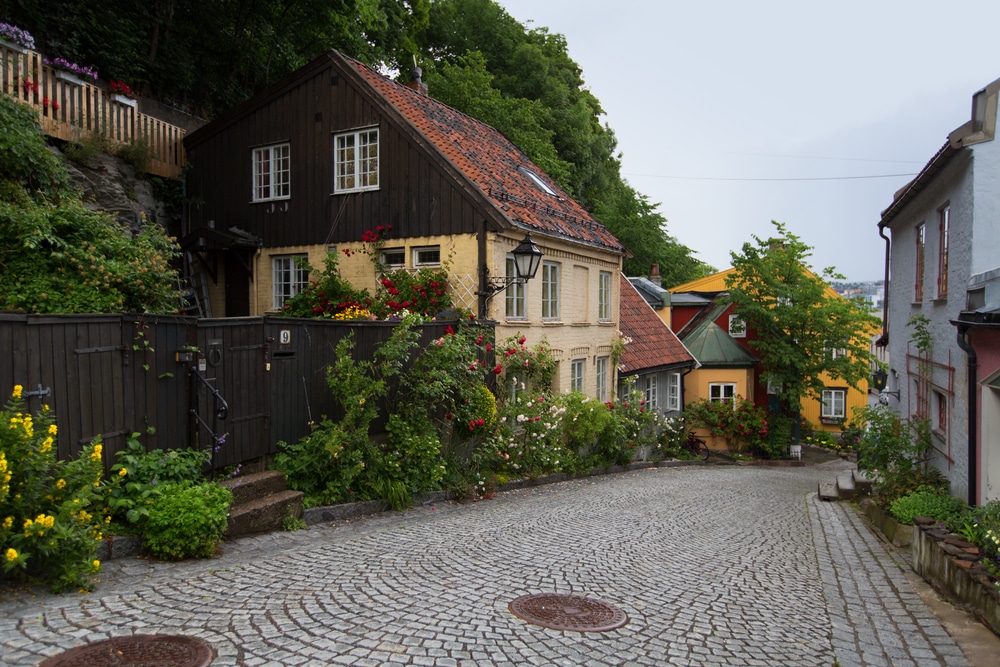 Source: Anna Levan / Shutterstock
Source: Anna Levan / ShutterstockIn leafy St. Hanshaugen you can track down some of Oslo’s prettiest streetscapes. Set close together, Damstredet & Telthusbakken represent Oslo at its cosiest, with little painted wooden houses dating back to 18th century and traced by neatly-tended gardens.
Damstredet is a winding cobblestone street with lots of cute photo opportunities along its 160 metres, though it’s worth remembering that this is a residential area.
Telthusbakken, around the corner, off Akersveien is longer, and has a pastoral ambience, with its row of picture-perfect wooden houses one side, facing off against the allotment gardens of Egebergløkka.
13. Bygdøy
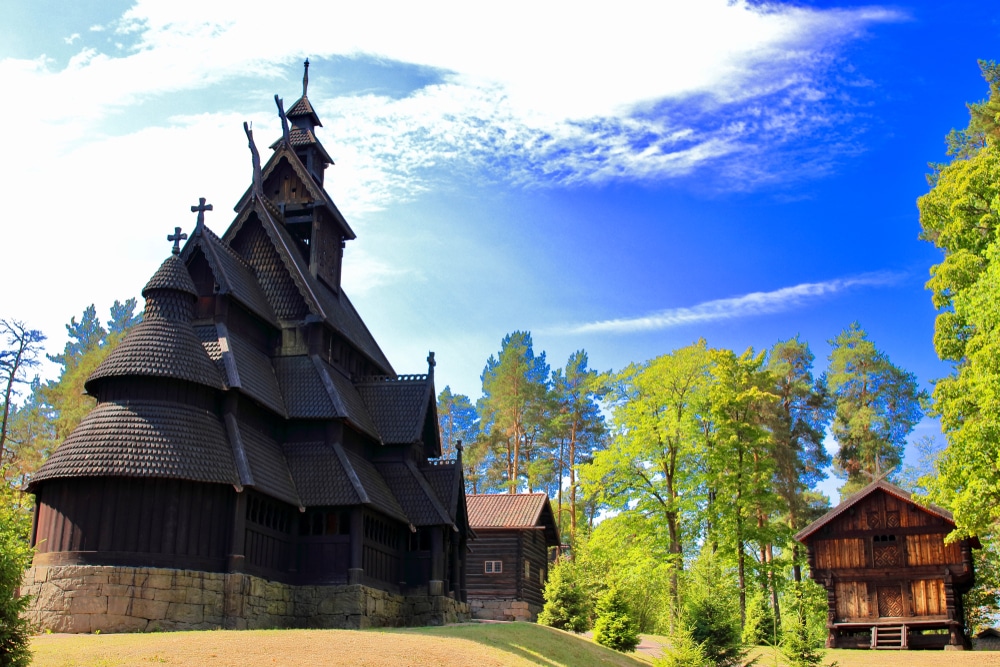 Source: Nacho Such / Shutterstock
Source: Nacho Such / ShutterstockIn the 1700s and 1800s this peaceful peninsula west of Oslo became the location of choice for wealthy families to set up country houses.
This followed a trend established by the Danish Governor of Norway, Christian Rantzau in 1733 whose Baroque manor house remains the summer residence for the King of Norway.
Even now, Bygdøy is as upmarket as it gets, but is also firmly on the tourist radar for its museums and opportunities for recreation.
Five of Norway’s national museums are on Bygdøy, four of which are counted on this list. Oslo’s favourite beaches can also be found here, just a few minutes from the city centre.
These include the shallow and grass-fringed Huk, the sandy and calm Paradisbukta and Bygdøy Sjøbad, where the sheltered water is ideal for activities like stand-up paddleboarding.
And if you’re in the mood for some exercise the peninsula’s green interior is coursed with trails for walking and cycling. In summer you can tour another royal property at the neo-Gothic Oscarshall, a maison de plaisance commissioned by King Oscar I on the north-east side of the peninsula.
14. Aker Brygge
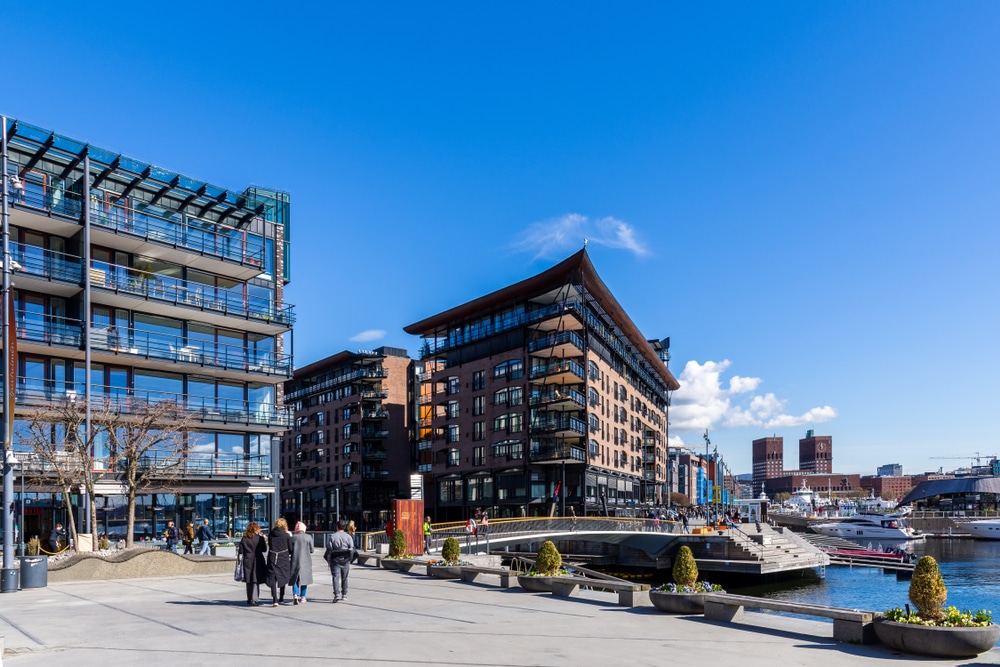 Source: Murphy1975 / Shutterstock
Source: Murphy1975 / ShutterstockFrom the 19th century until not long ago, this waterfront area just west of the centre of Oslo was given over to industry, as the home of the shipyard Aker Mekaniske Verksted AS.
Things started to change in Aker Brygge in 1982 with the closure of the shipyard, ushering in a period of redevelopment that turned it into a neighbourhood for dining, entertainment, offices, shopping and luxury residences.
Something to love about the area is the juxtaposition of impressive brick industrial architecture with modern buildings, and there’s always something going on, be it an exhibition, concert or some other pop-up event.
The restaurants and cafes in Aker Brygge have outdoor seating for 2,500 people, and most of these are on the scenic and bustling wharf, all the more dynamic as the NBDS terminal for ferries to Nesoden.
Follow the waterfront all the way south and you’ll eventually come to the Astrup-Fearnley Museum of Modern Art.
Website: https://www.akerbrygge.no/english/
15. Museum of Oslo
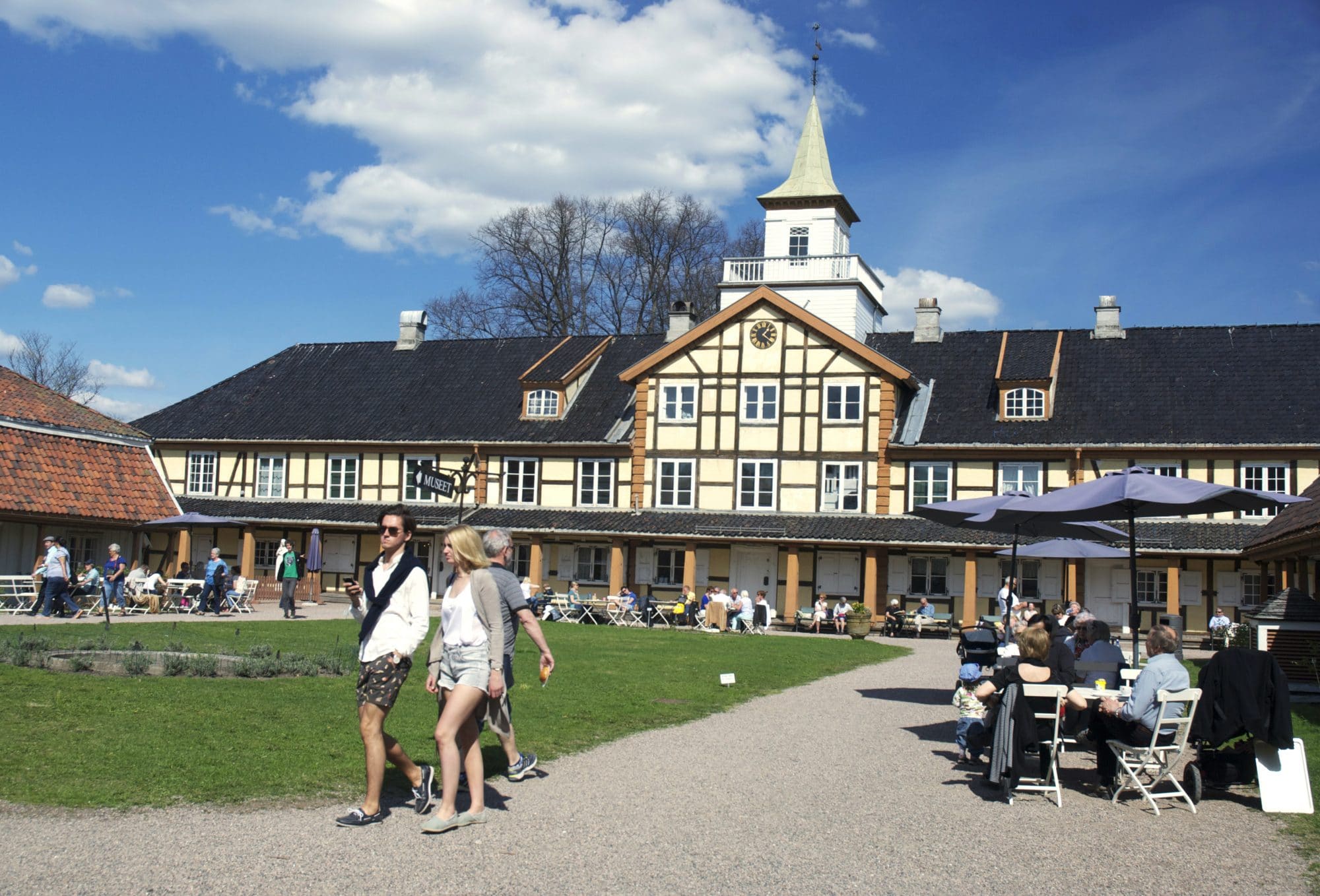 Source: oslomuseum.no
Source: oslomuseum.noAnother worthwhile attraction in Frogner Park is the Oslo Museum, set in the manor house dating back to the middle of the 18th century.
If you’re in need of a bit more background on Oslo, the museum has a series of exhibitions enhanced by models, photographs, paintings and some riveting artefacts.
The interpretation is in Norwegian, but there’s a multilingual audioguide. “OsLove” for example walks you through the story of Oslo, touching on major events like the fire of 1624, and showing archaeological finds like a Medieval skeleton.
For kids there’s an augmented reality app, designed to fit the main exhibition while offering fun activities for younger minds.
Short-term exhibitions delve into specific periods and themes, like WWII and the social upheaval of the 1970s. In the summer you can also sign up for a guided tour of the remainder of Frogner Manor, taking in sumptuous preserved interiors dating from 1750 to 1900.
Website: https://www.oslomuseum.no/oslo-museum/english/
16. Karl Johans Gate
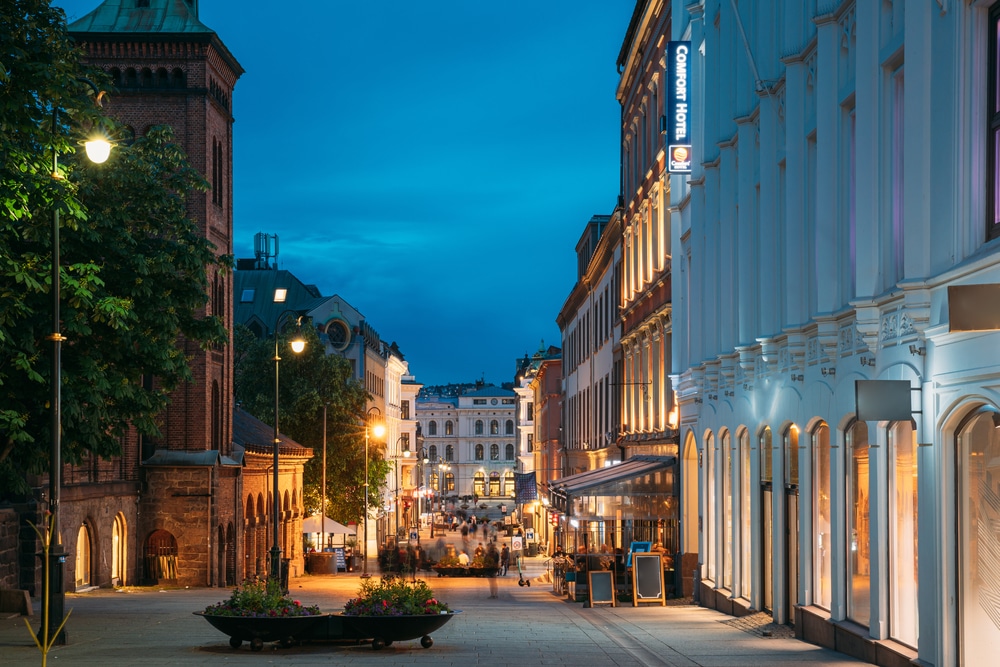 Source: Grisha Bruev / Shutterstock
Source: Grisha Bruev / ShutterstockIf you’re just in the mood for a wander, Oslo’s main artery, from the train station in the east to the royal palace in the west, is a fine way to enjoy the pulse of the city.
The street will take you next to or close to a succession of big sights and institutions, like the cathedral, parliament building (Stortinget) and National Theatre.
A big stretch of Karl Johans Gate is pedestrianised where it passes through a shopping precinct, with a cast of street performers.
Further west, by Stortinget you’ll find yourself in a grander setting, where the street skirts along an avenue of lime trees.
On one side are handsome old apartment blocks with restaurants and terraces on the ground floor, while beyond the avenue to the south are parks with flower beds, statues and fountains.
These spaces are bordered by the grand architecture of the parliament, National Theatre and University of Oslo faculties, and it’s here that you’ll find the Spikersuppa Ice Skating Rink, open every day from November to March.
17. Vigeland Museum
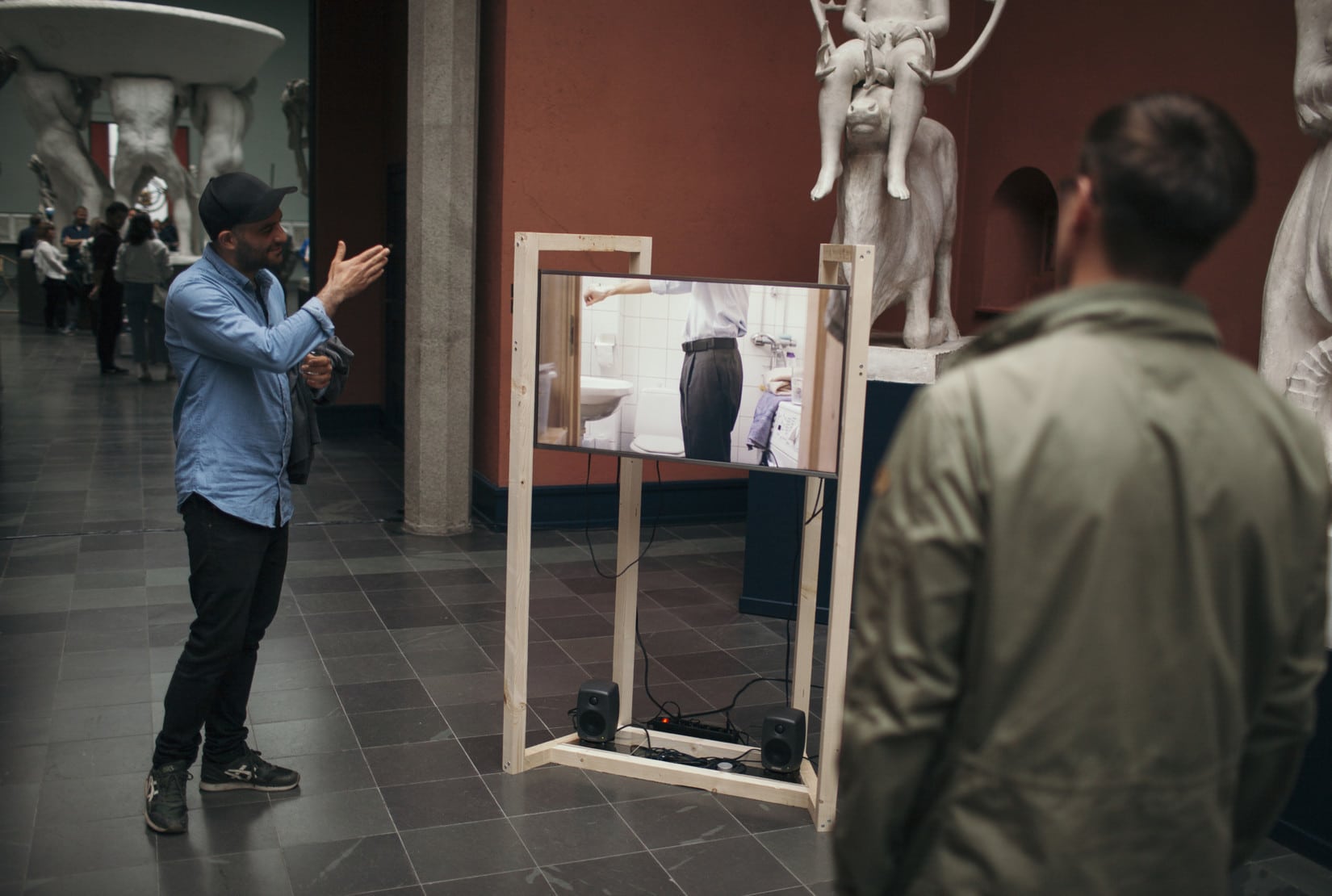 Source: vigeland.museum.no
Source: vigeland.museum.noIf you’re inspired by Vigeland’s sculpture in Frogner Park, you won’t have far to go to this museum, housed in the stately Neoclassical building in which he lived and worked.
This was ready in 1923 after Vigeland had promised to donate his works to the city, and the artist spent the last two decades of his life here knowing that it would become a museum after he passed away.
In the exhibition are the plaster originals for the famous sculptures across the road in Frogner Park, as well as his earliest pieces and many of his most celebrated monuments and busts.
Vigeland’s personal apartment is on the third floor, and has been kept exactly as it was when he was living in the building.
Website: https://vigeland.museum.no/en
18. Norwegian Museum of Science & Technology
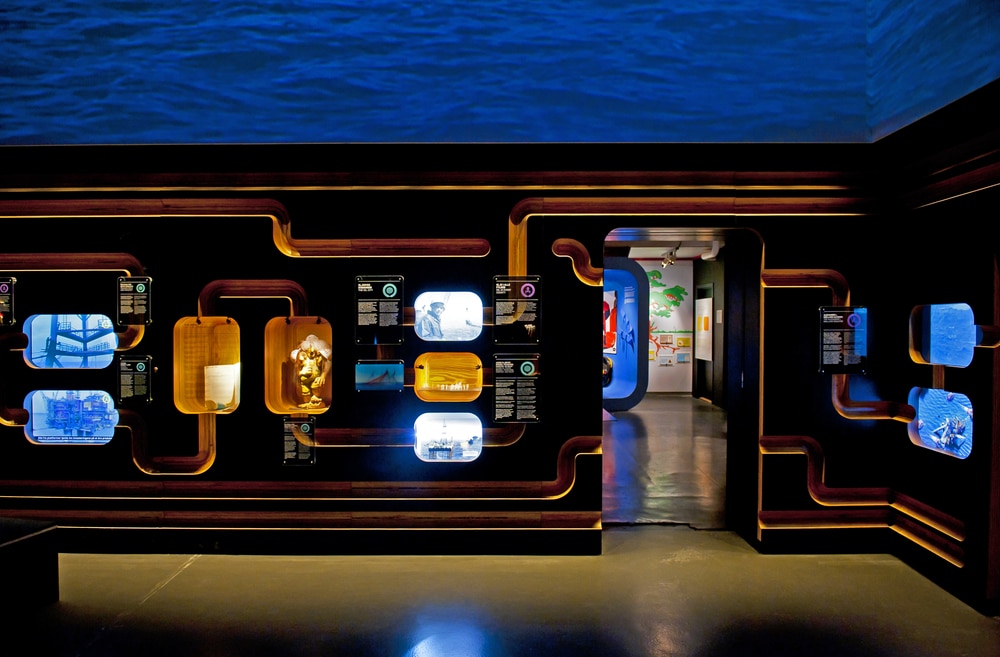 Source: Evikka / Shutterstock
Source: Evikka / ShutterstockIn the northern Kjelsås suburb this museum is equally fun and entertaining, with 100+ interactive installations and in-depth on more than 25 different themes, almost all relating to Norway in some way.
These topics vary from hydroelectric power to Norway’s oil and gas production, the history of industry in Norway, computing, clocks and watches, papermaking, transport and Norwegian medical history.
The building, designed by Rolf Ramm Østgaard, and opened in 1986, is deceptively large, and houses tons of pioneering machines.
Some standouts are a Tesla electron microscope from 1958, the earliest Norwegian-built computer from 1952, a Hollerith Counting Machine used for the Norwegian census in 1900 and steam and electric-powered cars from the beginning of the 20th century.
Website: https://www.tekniskmuseum.no/
19. Nobel Peace Center
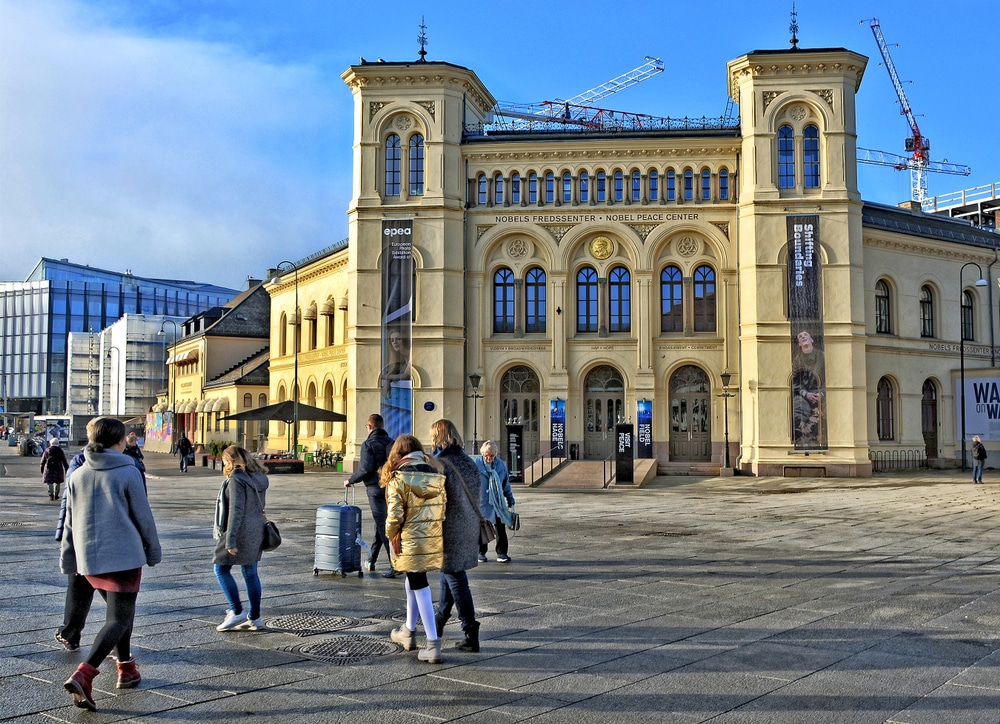 Source: Nataly Reinch / Shutterstock
Source: Nataly Reinch / ShutterstockYou can dip into the history of the Nobel Peace Prize and its long list of laureates at this attraction housed in the former Oslo West railway station building from 1872.
The center’s high-tech exhibitions use multimedia and interactive, family-friendly experiences to highlight the work of Nobel Peace Prize laureates, as well as stimulate reflection on war and conflict resolution.
There’s also background on Alfred Nobel (1833-1896), the inventor of various explosives including dynamite whose name is now associated with progress and peace.
Every Friday at 12:00 from April to the start of October a dove of peace is released from the center, accompanied by the “Good News of the Week”, while the nearby City Hall carillon plays John Lennon’s “Give Peace a Chance”.
This bird is cared for by the Norwegian Carrier Pigeon Society, and immediately flies back to its base on the east side of Oslo.
Website: https://www.nobelpeacecenter.org/en/visit
20. Natural History Museum
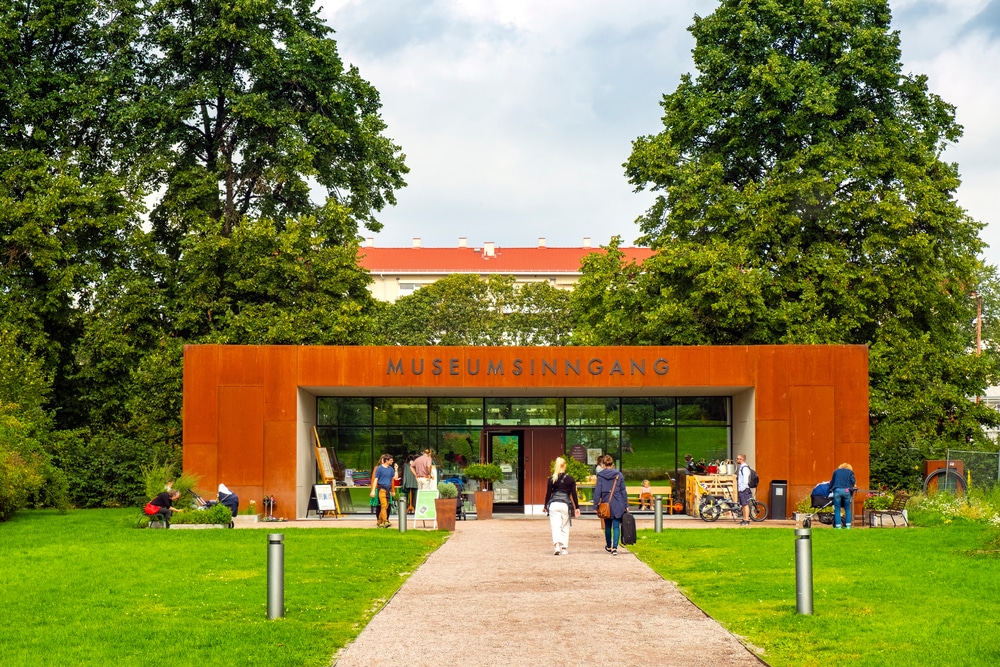 Source: ArtMediaFactory / Shutterstock
Source: ArtMediaFactory / ShutterstockThis attraction, run by the University of Oslo, holds Norway’s largest collection of natural specimens.
The location is special too, at the historic Tøyen manor, inhabited by a long line of important figures and boasting one of the city’s oldest timber buildings, dating to 1679.
When we wrote this article the museum was undergoing redevelopment, with major new exhibition spaces planned in the 2020s.
But you could still see the most important pieces from the collection in the Zoological Museum building. With exceptionally crafted dioramas, the Norwegian Hall displays the wealth of the country’s habitats, while the Zoogeographic Hall presents the earth’s biodiversity.
The Tree of Life neatly explains the history of evolution, and Stones and Bones showcases an enthralling array of fossils, crystals and minerals.
Maybe the most important thing you’ll see here is Ida, the world’s oldest complete primate skeleton, discovered in Egypt and dating back 37 million years.
Website: https://www.nhm.uio.no/english/
21. Botanical Garden
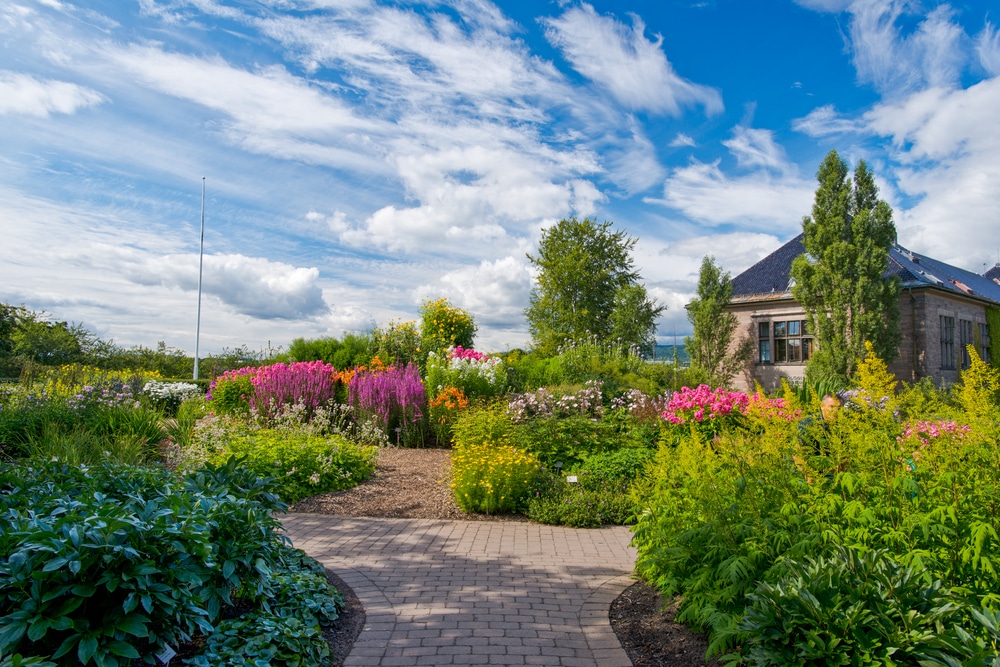 Source: Nanisimova / Shutterstock
Source: Nanisimova / ShutterstockA necessary follow-up to the Zoological Museum is the Botanical Garden, the oldest part of the Natural History Museum, established on the Tøyen estate in 1814.
The garden has doubled in size since that time, and has around 35,000 individual plants from 7,500 species.
These are planted in gorgeous themed spaces, like the Arboretum, Rock Garden, Scandinavian Ridge, Oslo Ridge, Aromatic Garden, Old Garden and Systematic Garden, to name just a handful.
Also lovely are the Palm House (1868) and the Victoria House (1876), closed to the public at the time of writing, while the compelling Climate House opened in spring 2020 and handles environmental topics.
The garden’s entire collection is posted in a database on the Natural History Museum’s website, and you can locate plants around the garden using the “Plant Finder”.
Website: https://www.nhm.uio.no/english/visiting/botanical-garden/
22. Kon-Tiki Museum
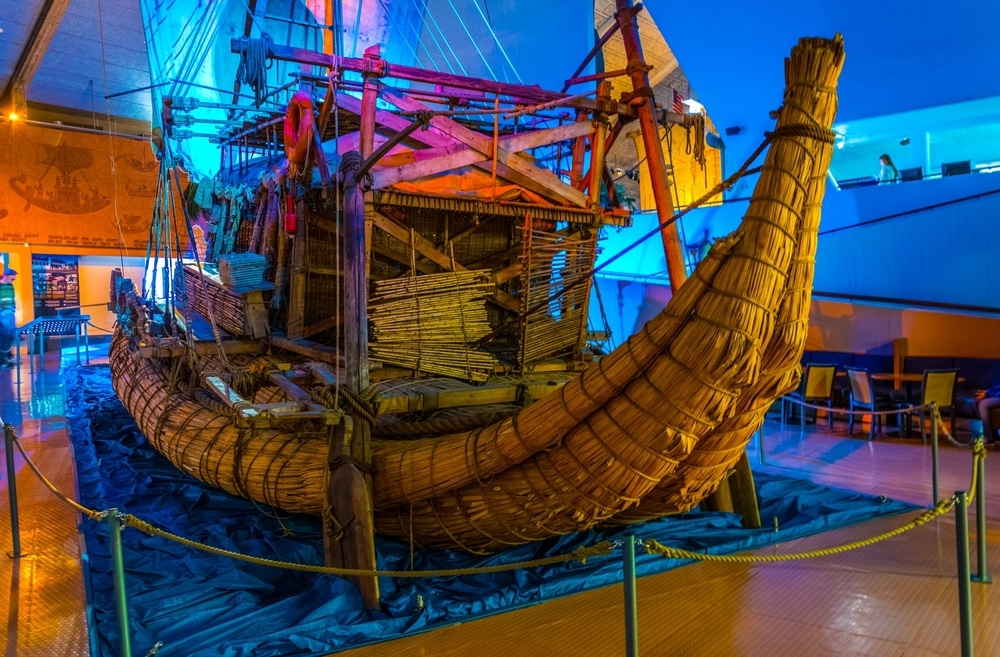 Source: trabantos / Shutterstock
Source: trabantos / ShutterstockThe explorer Thor Heyerdahl (1914-2002) achieved something extraordinary in 1947 when he crossed the Pacific from Peru to Polynesia on a balsa wood raft.
The Kon-Tiki expedition was recorded on film and the documentary won an Oscar in 1950. By navigating the ocean on a pre-Columbian-style raft, using only technology and material from that time, Heyerdahl wanted to test his hypothesis that the people of Polynesia had South American origins.
The museum dedicated to the expedition is on Bygdøy and opened in 1949 to house the Kon-Tiki raft. You can see this history-making vessel up close, as well as the papyrus Ra II, which Heyerdahl sailed from North Africa to the Caribbean.
These vessels are accompanied by a trove of objects from his expeditions and artefacts from the excavations he conducted in the Pacific Islands.
The Academy Award-winning documentary is screened every day at 12:00 in the museum’s auditorium.
Website: https://www.kon-tiki.no
23. Tusenfryd
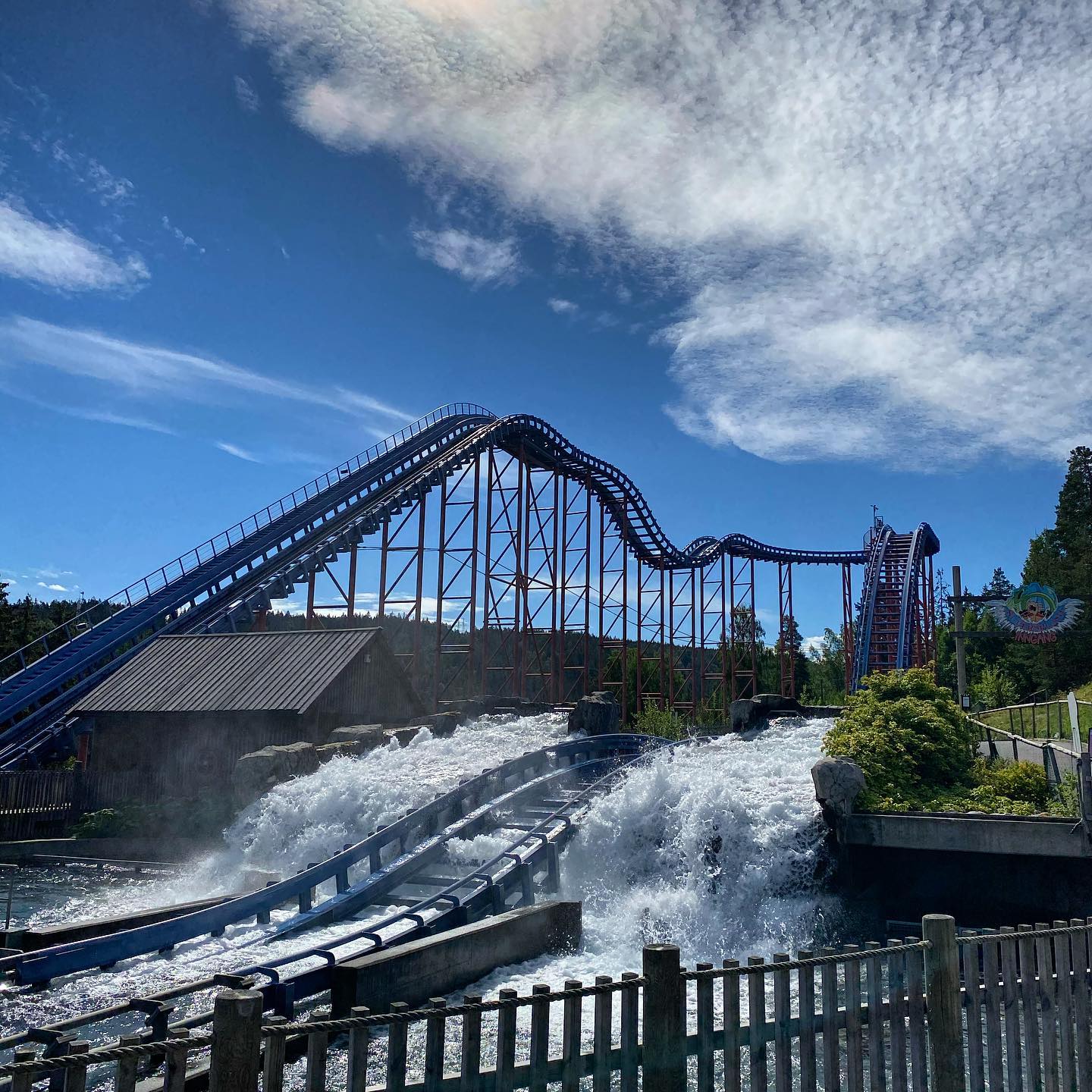 Source: facebook.com
Source: facebook.comFor families heading to Oslo in summer, this amusement park 20 kilometres south of the city in Vinterbro is a day out to keep in mind.
Tusenfryd opened in 1988 and is always updating its 30+ rides and attractions.
Thrillseekers in need of inversions and high g-force won’t be disappointed, on rides like Speed Monster, which has a hydraulic launch accelerating from 0 to 90km/h in just 2.2 seconds.
Littler members of the clan will have a whale of a time at Frydskogen and Barnas Fryd, packed with rides and activities for smaller children.
The Badefryd waterpark has a variety of slides, and is ready for the unpredictable Norwegian summer, with water heated to a constant 25°C.
Website: https://www.tusenfryd.no/en
24. Mathallen Oslo
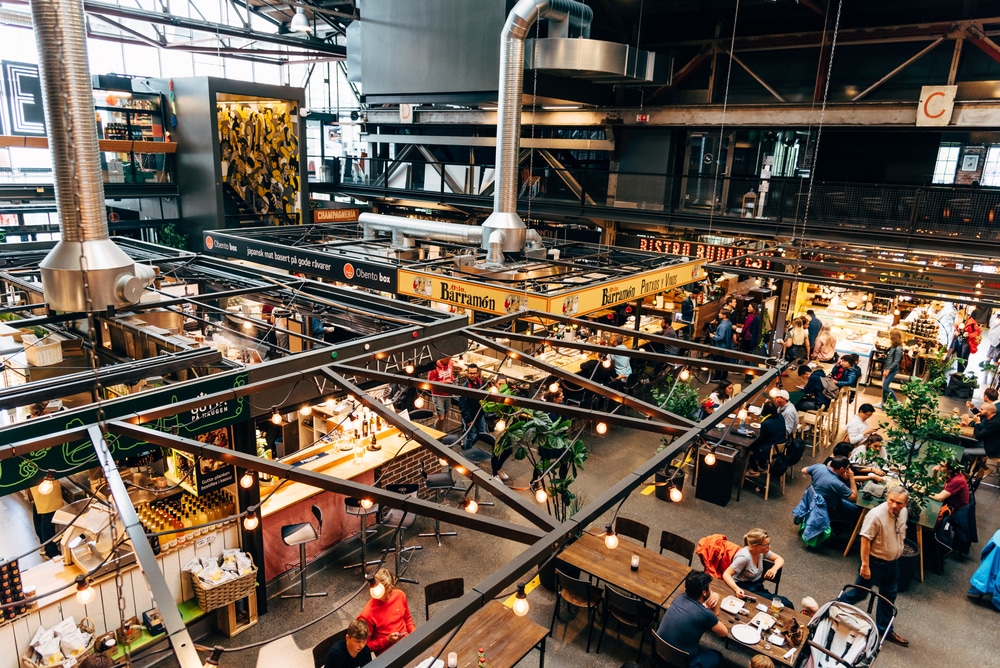 Source: JJFarq / Shutterstock
Source: JJFarq / ShutterstockThis evocative brick market hall on Vulkan is a hip food destination, popular with locals and tourists, is home to more than 30 specialty shops and eateries for Norwergian and international cuisine.
Mathallen is the place to get your hands on high-quality Norwegian products, from fresh fruit and vegetables to cheeses, cured reindeer and elk meat, biscuits, honey and jams, as well as imported delicacies from around the world.
The market also shines as a food court, whether you’re up for ultra-fresh sashimi, fish & chips, American-style subs, pintxos, dim sum, grilled cheese, pizza or something sweet.
Website: https://mathallenoslo.no/en/
25. Oslo City Hall
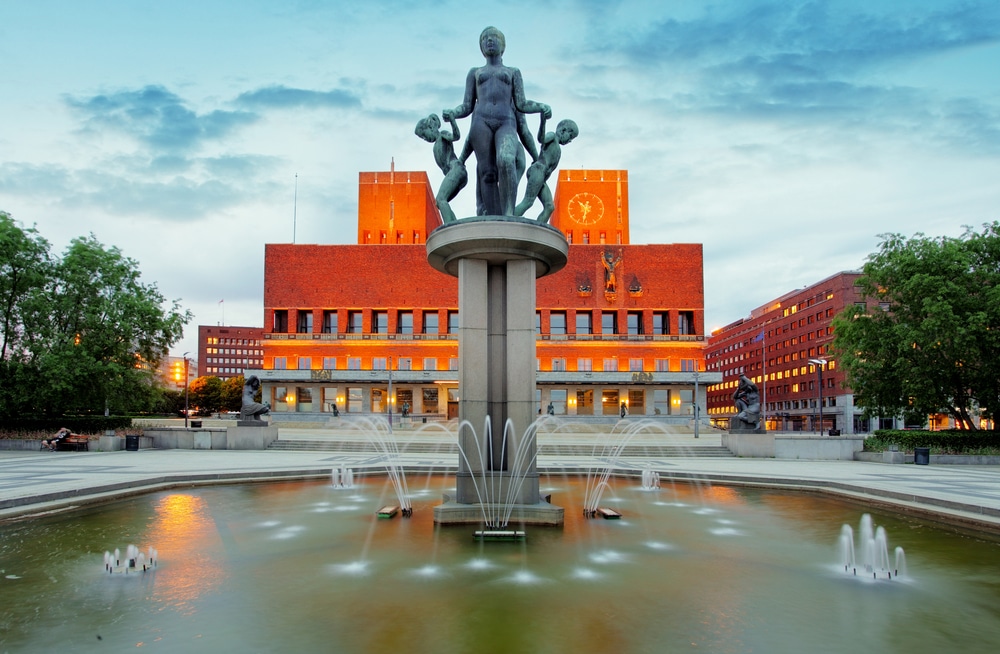 Source: TTstudio / Shutterstock
Source: TTstudio / ShutterstockHard to miss for its two rectangular towers, 63 and 66 metres tall, Oslo City Hall is a Functionalist monument that went up by the Oslo Fjord between 1931 and 1950.
This continues to be the seat of the city council, city administration and a number of municipal organisations, but also stands as a pared-down but arresting landmark, infused with motifs from Norwegian history and open to all visitors.
The City Hall is the venue for the Nobel Peace Prize ceremony, taking place every December and attended by the Prime Minister and Norwegian Royal Family.
One reason to book a guided tour is to view the City Hall’s wealth of art from the first half of the 20th century, by the likes of Munch and Henrik Sørensen.
Another interesting piece of trivia is that the east tower holds the largest carillon in the Nordics. The bells chime on the hour from 07:00 to midnight and there’s a concert by the carilloneur every Sunday at 15:00 in June, July and August.